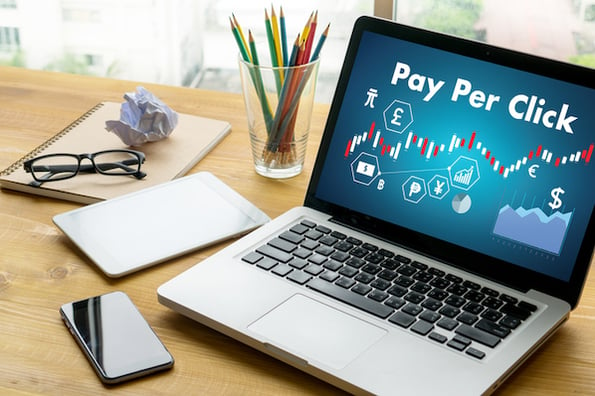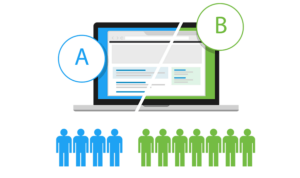Key Differences Experimentation vs PPC Campaign Testing Tips will be described in this article. of When it comes to expanding your business online, there are some aspects of marketing that always seem to draw more attention than others. Tests are one of these.
Since it seems that most facets of society have adopted “data-driven” approaches, this dedication to (and, some could say, preoccupation with) data is not limited to the marketing industry.
Experimentation vs PPC Campaign Testing Tips
In this article, you can know about Experimentation vs PPC Campaign Testing Tips here are the details below;
Although marketing decision-making that is informed by data is tremendously beneficial, there is a right time and place for everything, and marketing is about much more than simply numbers.
Prior to developing successful marketing initiatives, the data that fuels those campaigns cannot exist. The imagination that fuels results and generates the data that guides decisions is the chicken that lays the egg that makes testing feasible.
In this article, I’ll explain what A/B testing is from the standpoint of paid media, when it’s required, and when human traits like imagination, hunches, and common sense form the foundation.
What exactly do we mean by “testing”?
Although there are many different types of testing in marketing, such as multivariate testing, usability testing, and content testing, for the sake of paid advertising, we will mostly use the term A/B testing.
In an A/B test, you construct two variants of an advertisement or landing page, each with the exception of one element, to see which variation generates the most conversions. Ad wording, button colors, design components, the duration of the landing page, and other variables are all subject to testing.
Statistical significance, according to Investopedia, is “the claim that a result from data generated by testing or experimentation is likely to be attributable to a specific cause,” and it must be reached for the version that performs better. A association that has a high level of statistical significance suggests that it is unlikely to be a coincidence.
A change or variant should typically have a confidence level of 95% before being deemed statistically significant.
When is it appropriate to begin testing?
Many people adopt an overly “scientific” strategy right away, closely scrutinizing every impression and click and running micro experiment after micro experiment with little changes to ad wording and creative.
The issue with this is that by hyper-focusing on little aspects too early, they are limiting themselves. When it comes to the kind of feedback or outcomes you can encounter when you first start out, successful paid advertising is not necessarily an instant accomplishment.
It takes time and careful study to figure out which levers to pull and where to make tactical modifications using a channel like Google Ads, for instance. You can create an advertisement or make a change, then wait a week or two to see the results. There is also the algorithmic learning curve to take into account.
Therefore, the question is: When should testing start?
Each company has a unique growth stage, amount of creative resources at their disposal, and industry in which they compete. Everyone begins with a clean slate when it comes to paid media outlets at some point. Your first promotions and strategy will frequently have an impact on how your paid advertising accounts develop, for better or worse.
According to my observations, testing should start as soon as you start to see any progress toward the desired outcomes. As a result, you should start testing as you start to notice some results, for instance, if you want to increase conversions from lead form submissions. Therefore, you can be asking yourself, “What if I’m not driving any results and therefore need to test in order to do so?” To distinguish testing from experimentation is how I would respond to that question.
Testing vs experimentation
Testing in the context of paid marketing involves contrasting a control with a change. To determine if the changes you have made are statistically significant or not, you are “testing” a new variant against an earlier version.
The goal of experimentation, on the other hand, is to test a number of commercials and promos on your target demographic to see which seems to be the most successful.
The platform’s functionality known as Google Ads experiments should not be confused with experimentation.
While some may refer to this as testing, I think it is less scientific and more constrained. You can pinpoint what works and conduct tests inside that framework after you start to gather significant data and feedback.
How to do experimentation the right way
There is a method to use as well when you are in the exploring and experimentation stage. I prefer to personally develop the target persona on paid social networks before creating 3–4 ads that are specifically targeted to that persona.
These advertisements will be in line from a conversion or web traffic standpoint given the client’s objective. A retargeting audience will also typically be built by me to test against site visitors who are already familiar with the brand. From there, we might add more ad versions, experiment with language or creative, and then let the campaign run and gather data. Also check Landing Page Builders
At this point, we are able to assess how open the audience is to various messages, and the information will ultimately help us decide which course of action to pursue. By recognizing that some language and creative aspects resonated significantly better with our audiences than others, we were able to raise lead-to-sales opportunity ratios for one of my clients by over 15%. However, we came to that conclusion by not being overly strict with testing early on and instead letting the advertisements run before analyzing the results.
In conclusion? Setting baselines enables you to build expectations and improvement targets, which is the aim of the testing or exploration phase. By doing this, you will pass the experimental stage and enter the testing stage. From there, you can develop a testing model that enables slight performance gains without carrying the risk of attempting a completely new promotional set.
How (and when) to move from experimentation to testing
The stages of growth inside a paid advertising account and what you should be doing are outlined below to make my method for trial and testing simpler:
Early stage: Experimentation only
If you are beginning a new Google Ads campaign or account, you should first concentrate on setting up accurate tracking, pixel implementation, etc. The most crucial aspect of this initial stage is knowing your overall advertising goal and making sure your website and CRM are appropriately tracking these results, whether they be website visits or conversions.
Google Ads Conversion Tracking Tag for Setting Up Google Ads Enhanced Conversions
You should start by creating campaigns with that overarching purpose in mind before moving on to the experimenting stage. This is another ppc campaign testing tips.
Create campaigns for your branded search phrases and some of your most pertinent terms from keyword research if it is paid search. Try to start with a strategy that has the best chance of delivering the desired outcome, and once baselines have been established, expand from there. Here is information on how to configure conversion tracking in Google Ads.
You should follow the same procedure in paid social, but with website remarketing and a well created target persona. In paid social, you should decide what goal you want to achieve and test plenty of promos that fit that objective.
Middle stage: start testing
You have tried out several offers and have figured out what seems to work in what I refer to as the middle stage. Now that you are aware of the basic costs associated with these promotions, you are prepared to begin testing different iterations of this offer. Here is where you may start running A/B tests. Also check Benefits Of Effective Advertisements
Growth stage: Refine your testing
You can be sure of what drives commerce within the account at this point. When an account is at this stage, you want to identify ways to expand it while staying within the boundaries of what has worked in the past. In order to reduce the danger of performance degradation at this point in the game, you want to test very rigorously with relatively tiny modifications to variations. Larger, riskier trials ought to be isolated to separate testing efforts from the ones that are already generating revenue for you. This is another ppc campaign testing tips.
Patience is key with campaign testing
The major lesson you should get from this advice is to be far more lenient with new and early paid advertising than what some others may advise. Even while everyone wants to succeed right away, being patient will benefit both your paid accounts and your professional growth as a marketer much more.
You can be more innovative and push the boundaries of marketing by not depending too heavily on data when making early judgments. Early on, being more receptive to new ideas will inevitably cut down on the time you would have otherwise spent testing little tweaks to one concept. You must take some chances to create a stronger baseline for the future if you want to succeed in advertising over the long run.




